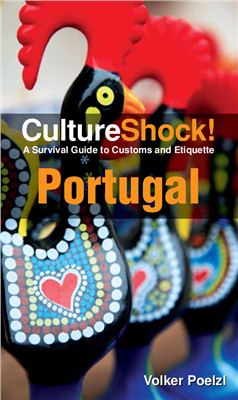Maall Caven dish Corporation, 2009. - 292 pages.
Preface: When I fi rst began research on this book, little did I know that I would soon be led astray by Portugal’s age-old history full of details, anecdotes and tales. Experiencing Portugal was like walking through the open pages of a history book, and it took me some time to get past legends, castles, ruins and cathedrals to arrive in the present and see Portugal the way it is today and not how it was 500 or 800 years ago. I realised that in order to understand Portugal today, it was necessary to understand it through its past. This book is the result of my jouey of discovery that led me from the heather-clad mountainsides of the north to the small fi shing towns of the south, and from Paleolithic rock art in the upper Douro region to the steel and glass architecture of Lisbon’s Park of Nations. Researching and writing this book was a little bit like wandering through Lisbon’s Alfama district, with its myriad stairways and winding narrow alleys that lead visitors astray. Every courtyard required a visit, every alley wanted to be followed, every stairway needed to be explored, and at every step new discoveries awaited me, from a beautiful flower arrangement on a rusty balcony to a market woman engaging me in a friendly conversation.
During my lengthy explorations and research in Portugal, I tried to keep in mind the main question: what information, among all this wealth of details, facts, anecdotes and experiences, would provide essential insights into Portuguese culture for the readers? I wanted this book to be both informative and entertaining, and above all, I wanted to awake in the reader a little bit of that curiosity about Portugal that guided me on my own discoveries. This book is by no means an attempt to cover every aspect of Portugal. It is merely intended as an introduction to the wealth of Portuguese culture and an invitation for readers to lose themselves a little bit in Portugal’s rich art, music, history, stalwart castles and narrow alleys and come out enriched and transformed.
Preface: When I fi rst began research on this book, little did I know that I would soon be led astray by Portugal’s age-old history full of details, anecdotes and tales. Experiencing Portugal was like walking through the open pages of a history book, and it took me some time to get past legends, castles, ruins and cathedrals to arrive in the present and see Portugal the way it is today and not how it was 500 or 800 years ago. I realised that in order to understand Portugal today, it was necessary to understand it through its past. This book is the result of my jouey of discovery that led me from the heather-clad mountainsides of the north to the small fi shing towns of the south, and from Paleolithic rock art in the upper Douro region to the steel and glass architecture of Lisbon’s Park of Nations. Researching and writing this book was a little bit like wandering through Lisbon’s Alfama district, with its myriad stairways and winding narrow alleys that lead visitors astray. Every courtyard required a visit, every alley wanted to be followed, every stairway needed to be explored, and at every step new discoveries awaited me, from a beautiful flower arrangement on a rusty balcony to a market woman engaging me in a friendly conversation.
During my lengthy explorations and research in Portugal, I tried to keep in mind the main question: what information, among all this wealth of details, facts, anecdotes and experiences, would provide essential insights into Portuguese culture for the readers? I wanted this book to be both informative and entertaining, and above all, I wanted to awake in the reader a little bit of that curiosity about Portugal that guided me on my own discoveries. This book is by no means an attempt to cover every aspect of Portugal. It is merely intended as an introduction to the wealth of Portuguese culture and an invitation for readers to lose themselves a little bit in Portugal’s rich art, music, history, stalwart castles and narrow alleys and come out enriched and transformed.

